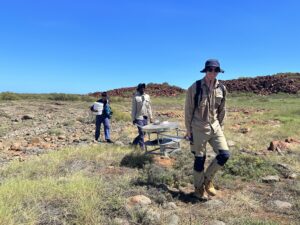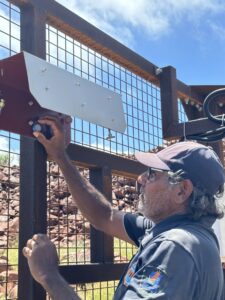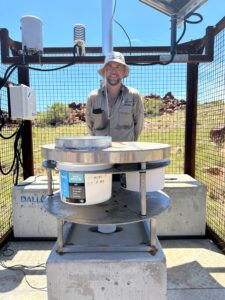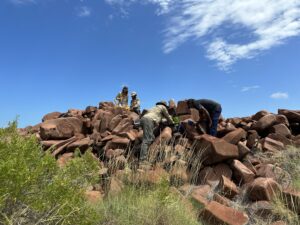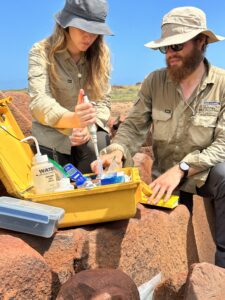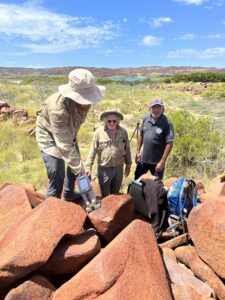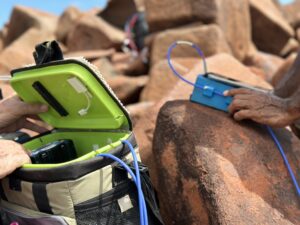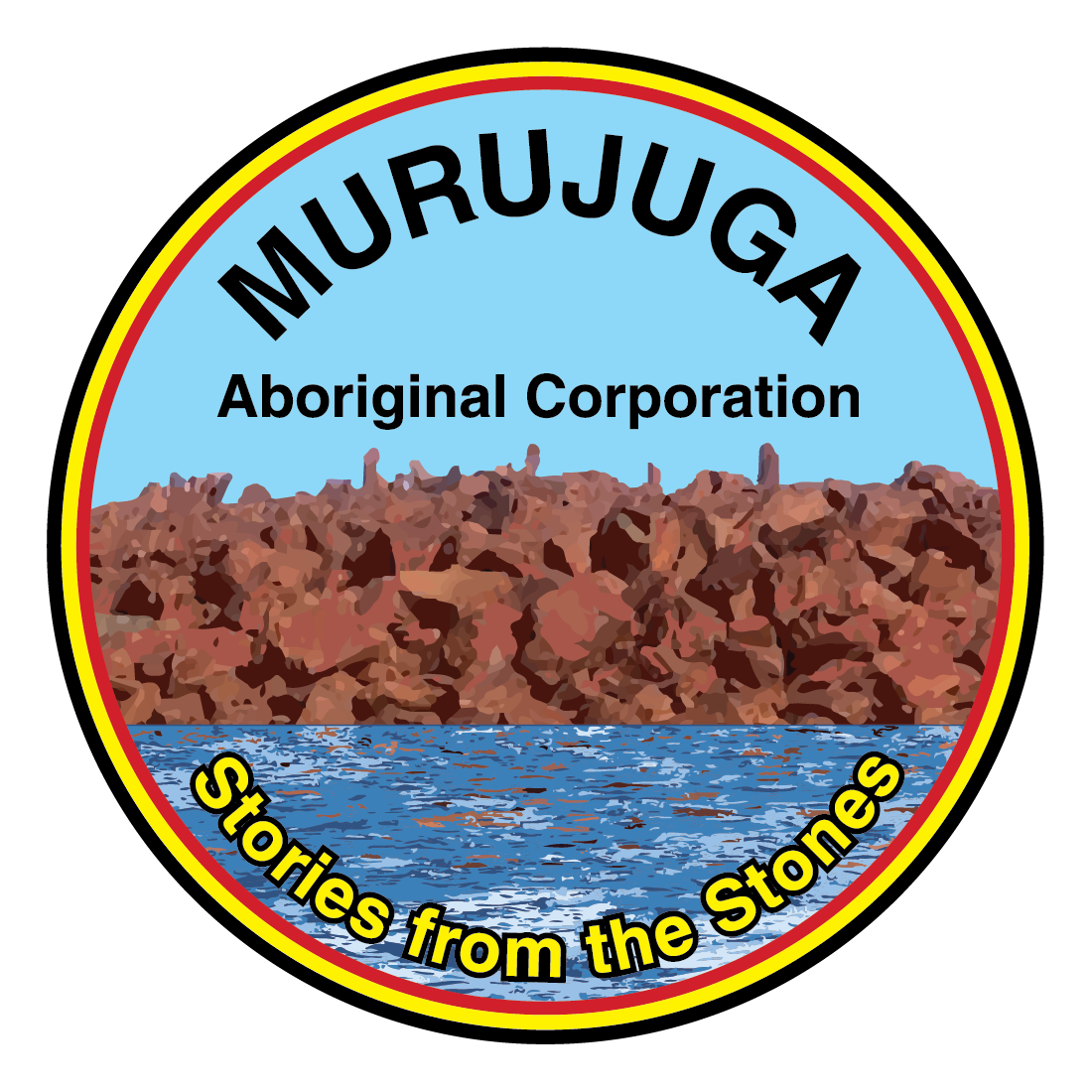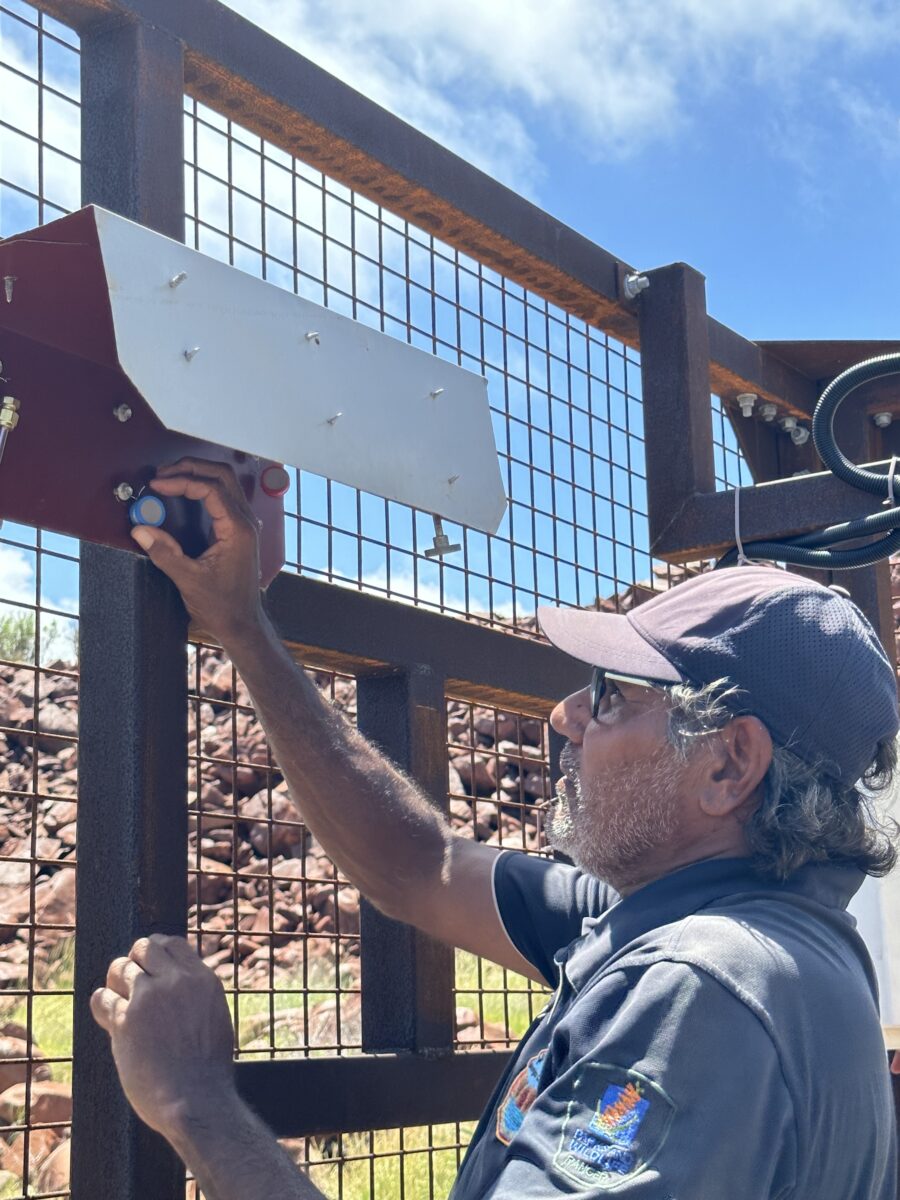
Amid steaming heat, a wide range of scientific fieldwork has been underway on Murujuga this month as MAC Rangers and scientists progress the collection of data for the Murujuga Rock Art Monitoring Program (MRAMP).
Curtin University Professor Ben Mullins and his team of engineers and air quality experts have been checking and installing additional instrumentation in some of the 21 new air quality monitoring stations that have been introduced on the islands of the Dampier Archipelago and Burrup Peninsula.
Each station has cyclone-resilient gear to measure weather and winds, and passive and real time sampling devices to measure potential airborne chemicals and gases.
Nearby, art conservator Andrew Thorn has been using a spectrometer to measure, at a microscopic level, potential seasonal changes to the colour and contrast on 54 representative rock art panels – while Francesca Cary and Stephano Tenuta have been applying an X-ray fluorescence analyser that measures the panels’ elemental composition and sampling the surfaces of other rocks to test for chemical residues.
Rock Art Monitoring Rangers Glen Aubrey and Kasziem Bin Sali are training in the fieldwork and other MAC Rangers assist as required. Meanwhile, highly-credentialed geochemists and microbiologists in Perth are examining pieces from 65 sample rocks at a molecular level to assess their biochemistry.
All sites and samples have been approved for this research by the Murujuga Circle of Elders. The Program builds on previous data collected on Murujuga since the early 2000s.
Including spatial mapping and all-important data scientists and statisticians, there are altogether 55 scientists, many eminent in their field, working in the MRAMP!
The Program will, for the first time, provide a comprehensive and statistically-sound analysis of whether anthropogenic emissions are affecting Murujuga’s rock art and also establish an Environmental Quality Management Framework to address any impacts of project emissions on rock art.
Photos:
1) National Park Ranger Nathan Evans and Curtin University researchers Mawutorli Nyarku and Ronnie Fellows-Smith carry equipment to an air quality monitoring station.
2) Rock Art Monitoring Ranger Glen Aubrey checks air quality samplers.
3) Each air quality monitoring station has a 10-metre mast for measuring wind direction and strength.
4) Murujuga Rock Art Monitoring Program Research Lead Professor Ben Mullins.
5) Sampling of rock surfaces.
6) Curtin University researchers Francesca Cary and Stefano Tenuta sample for any chemical residues on rock surfaces.
7) Stefano Tenuta applies an X-ray fluorescence analyser to the side of a rock panel while art conservator Andrew Thorn and Rock Art Monitoring Ranger Glen Aubrey watch.
8) A spectrometer, protected from the summer heat by a cooler bag, is used to measure, at a microscopic level, potential seasonal changes to the colour and contrast on a rock art panel.
